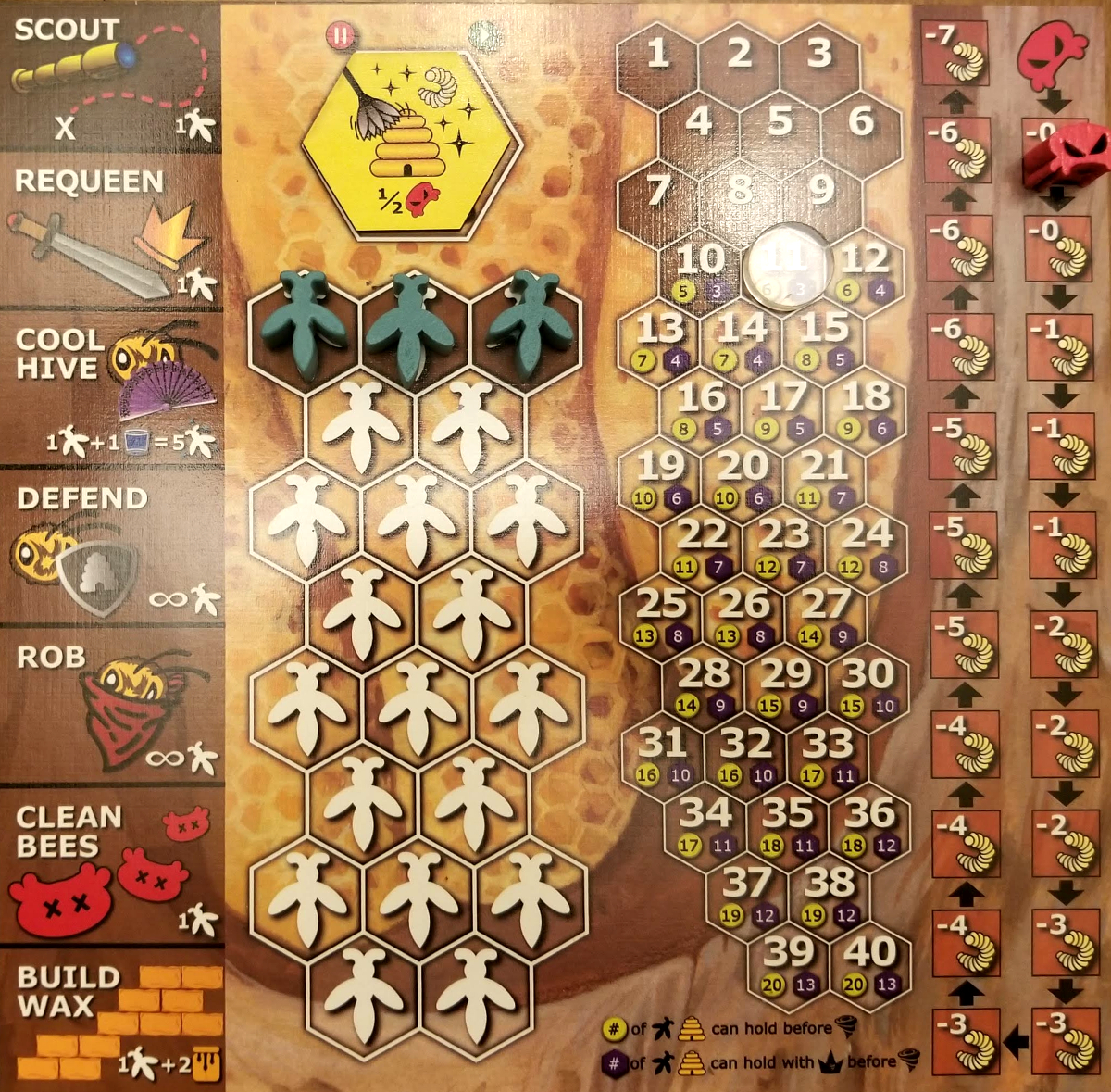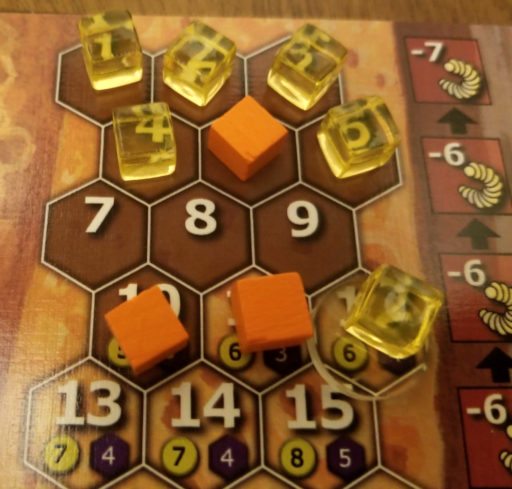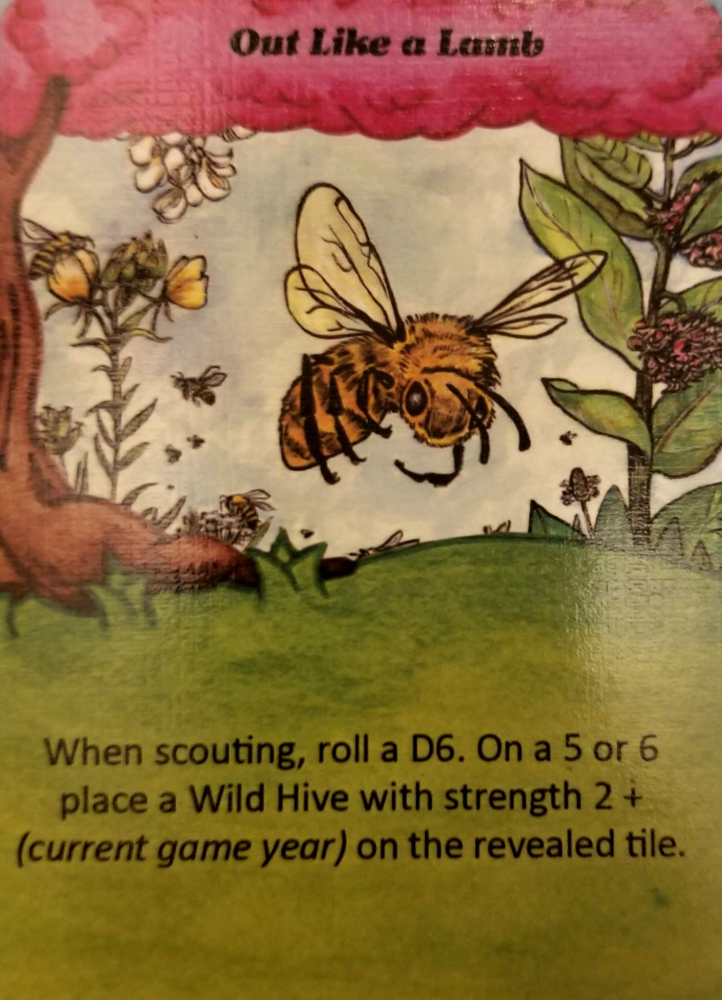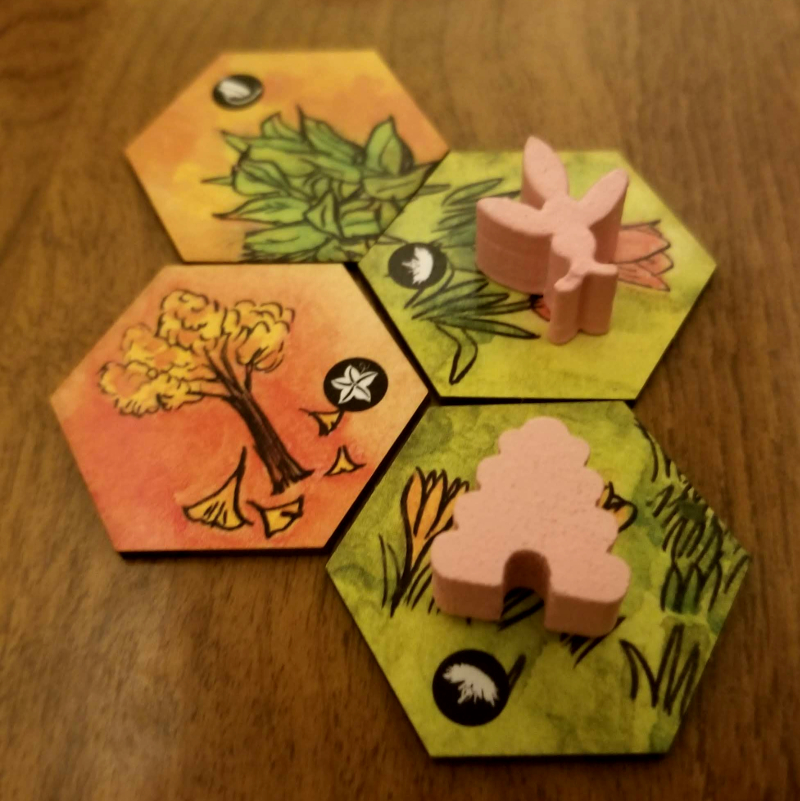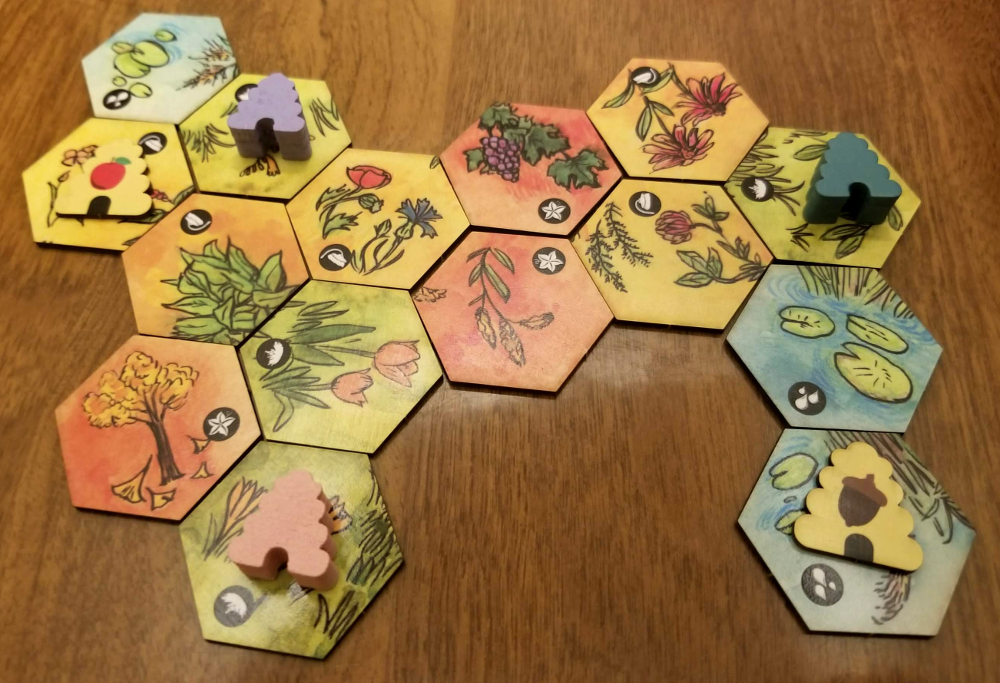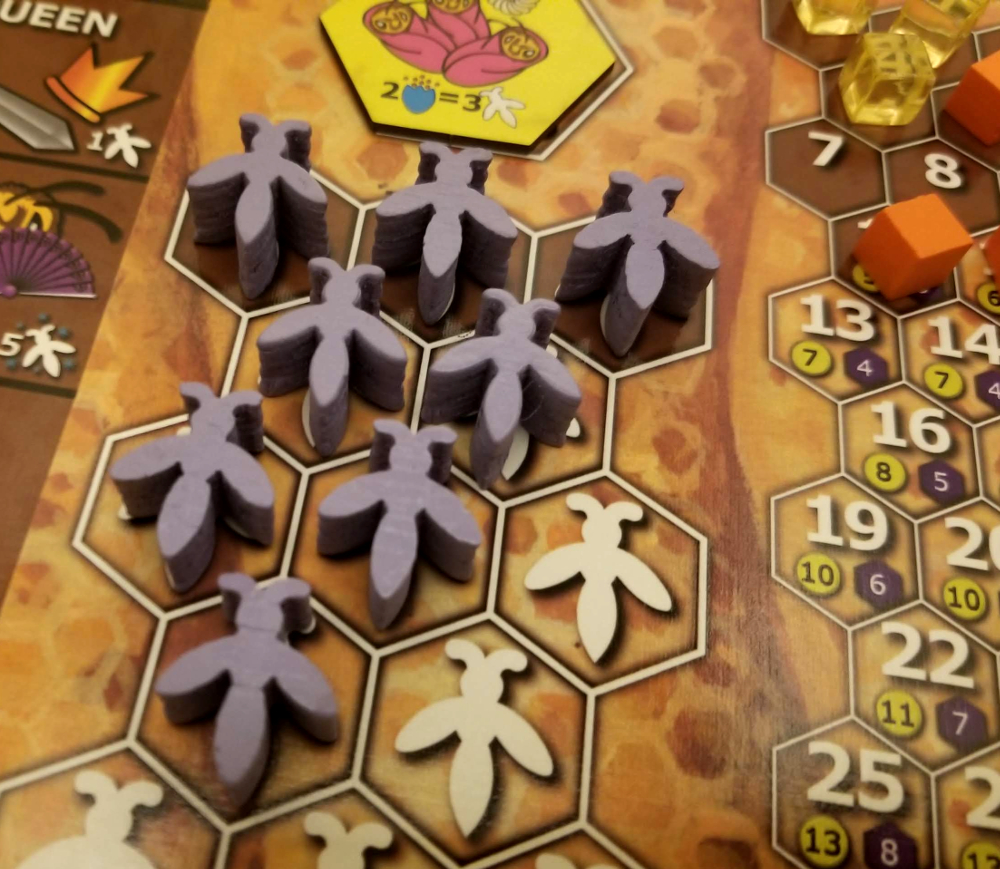Ask someone what they know about bees, and you’re likely to get a handful of the same answers. They fly, have nests, pollinate flowers, operate in a hive with a queen at the core, are generally yellowish in color, and the honeybee variety, well, makes honey.
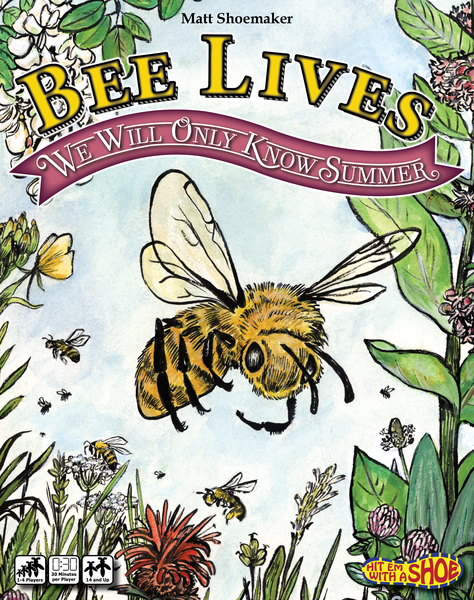 Yet the life of a bee is surprisingly far more complex than that, leading to all sorts of interesting facts about these industrious and hard-working flying friends. Did you know, for instance, that it takes roughly 10 pounds of nectar (approximately two million flowers!) to make 1 pound of honey? Or that bees within the hive have different jobs? Or that bees take painstaking efforts to maintain a sense of cleanliness within the hive?
Yet the life of a bee is surprisingly far more complex than that, leading to all sorts of interesting facts about these industrious and hard-working flying friends. Did you know, for instance, that it takes roughly 10 pounds of nectar (approximately two million flowers!) to make 1 pound of honey? Or that bees within the hive have different jobs? Or that bees take painstaking efforts to maintain a sense of cleanliness within the hive?
A recent scientific study even seems to believe that bees can understand the concept of zero, putting them on a list alongside dolphins, primates, and some birds as the only creatures to grasp that concept.
The point is, bees accomplish an awful lot, which is all the more remarkable considering that while the lifespan for bees in cold weather ranges from 4-9 months, their existence during the warmer season averages only about 40 days.
That is the world you find yourself transported to with Bee Lives: We Will Only Know Summer, the inaugural title of Matt Shoemaker’s Hit ‘Em With A Shoe studio. In this medium-weight thematic Euro game, players spend 9 months managing competing honeybee hives. Your goal in that time is to build up the most VP, which is accomplished by gathering goods, growing and expanding your hive, and fending off rival neighboring hives looking to edge in on your territory. Using a mix of worker placement and mild area control mechanics, players must take whatever steps necessary to accumulate points, yes, but also making your queen proud by ensuring your hive survives into the following round. With the cold, icy grip of winter always looming, you have less than a year to be as successful as possible.
At the beginning of the game, each player starts with their own hive on a single tile space in their tableau. The interior of your honeycomb hideout, by contrast, is tracked by a hive board. The main areas of this board consist of spaces for your worker bee meeples, your comb size tracker, and your queen. Every hive begins with three workers, a hive size of 11, and, of course, a queen bee of your choice. There are four types of queen bees available in Bee Lives, each providing its own special ability depending on your current strategic ambitions.
The nine rounds of Bee Lives bee-have largely the same way, with each representing the positive, productive months in a bee’s life. Each month breaks down into seven phases, though the majority of the game’s decisions take place in just one of them.
Before your bees can be sent abroad to do the dutiful bidding of their beloved queen, you must first progress through five steps that essentially amount to Zen and the Art of Apiculture. Yet these brief phases also help highlight one of the key attributes that distinguishes Bee Lives from being another run of the mill worker placement game. Every step is designed to highlight important parts of beehive operations, as well as offering mechanical and strategic considerations, and when stacked together they stitch together a comprehensive and thematic tableau of the hidden world of beedom.
Suffice it to say, it’s evident that the designer spent considerable effort finding the delicate balance between engaging gameplay and presenting something whose processes are rooted in factual basis. Games that revolve around scientific accuracy often have that additional challenge, and Bee Lives is no exception. Luckily in this game’s case, adherence to the source material in much of the game proves to be more beneficial than detrimental to its overall worth.
The first of these steps is the Egg phase, where you determine how much space your hive has to expand. Every comb cell in your hive is capable of holding one of the game’s three resources – honey, pollen, or water. In order for your queen to make some new baby bees, though, you also need empty space for said eggs. As such, here you simply count up your number of empty spaces to determine the potential number of new bees you’re able to get this round. If no spaces are available, then your hive sort of gets all stir-crazy and decides to Swarm all over the place instead.
No. Really. Swarming is a big deal both to actual beehive demeanor and to this game. But we’ll get to that.
Next, you must feed your existing colony by spending honey for each pair of worker bees. If you can’t afford it, your bees starve and die off. Which is generally not conducive to a healthy, buzzing hive. Just saying.
After that comes Brooding, wherein you spend pollen to birth new workers, up to the number of potential bees in the Egg phase or until you run out of pollen, whichever comes first. These new workers are usable that round, with the exception of those who immediately die off upon hatching. This die-off amount is tracked by your hive’s Disease track, reflecting the impact of external conditions that cause the death of bee populations, such as the varroa mite – a parasitic creature whose sole existence is to prey on bee colonies.
Because mother nature is needlessly cruel to everyone.
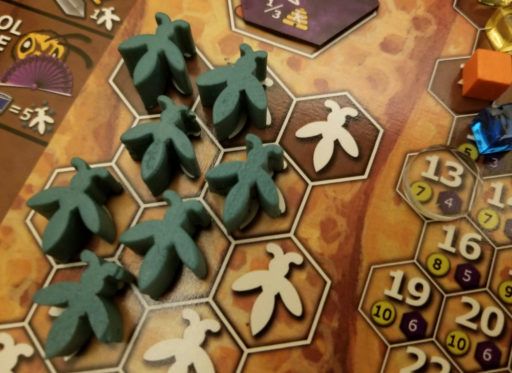
This hive has 7 workers, the current limit for a hive size of 13. If any new bees are hatched this round, this hive will Swarm.
Prototype Shown
Once resolved, it’s swarm time! Swarming is a key component to Bee Lives, and it’s one of the four ways you generate points. During the Swarm phase, your hive will either swarm if you were out of space in the aforementioned Egg phase, or if the number workers you have exceeds your board limit. When this happens, half of your hive’s workers and honey stores are packed up into presumably sticky suitcases and they move out, creating a neighboring hive nearby to your own.
As the queen, you must decide whether you want to be part of the half that stays or leaves, and each comes with their own strategic benefits. In both cases you’ll at least partially reduce your Disease track and will score that all important VP. Whichever hive you decide not to call home becomes a Wild Hive: a neutral hive not controlled by any player and will operate on it own until removed during the course of the game.
Finally comes the Event phase, which involves revealing a season card whose various ongoing effects that can significantly alter the course of your decisions for that round.
While important, all of these steps, save Swarming, can be done simultaneously and is handled quickly, leaving most of your time to focus on the subsequent Action phase. This is the worker placement portion of the game, and as such, contains the numerous tasks you can assign your hive to undertake. Some actions can be handled by committing a single worker bee, while others require more. When every player is out of workers for actions, the round ends with a brief cleanup phase, and the next month begins.
Most actions in Bee Lives fall into three categories: resource gathering, hive maintenance, and combat.
Resource actions involve either adding new adjacent tiles to your board by exploring (Scouting), or landing on a space near your hive to gather resources via Foraging. These flower spaces provide resources of varying kinds and amounts, depending on the type of space visited and the current season you’re in.
What makes Foraging more than simple goods gathering, however, is that because you have limited hive space, and resources can only be removed by consuming them or abandoning the hive upon Swarming, there exists a tenuous balance of taking everything you can from the spot you harvest versus taking only what you need.
Also, Foraging is one of the two main ways your hive gains Disease. Because even gathering pollen is a risky business.
Hive Maintenance options are similarly straightforward, involving actions such as building new spaces in your hive, reducing your Disease track, cooling off the hive (if necessary due to specific event cards), and changing your queen bee type as a means of shifting your strategy and tactics from one month to the next.
The two combat actions, by contrast, require both commitment and a small manner of forethought – as battle plans usually do. The Defend action allows you to allocate workers towards the defense of your hive, which is highly important in the right moments, but they serve no other purpose for the month. And then there’s the Raiding action, whereby you commit a number of worker bees to attack another hive, be it another player or a Wild Hive, in the quest for honey and VP.
Raiding is the other central pillar of Bee Lives, adding an arena of direct conflict not found in typical worker placement games. Although there are tactical decisions that you can make to minimize their effect, avoiding a raid – whether on the attack or defense – is pretty much impossible. Raiding provides valuable honey and points, making it an enticing and important element of the game – even if they also add Disease. One queen type in Bee Lives even specializes in combat.
However, the appeal of this style, moving the worker placement conflict model from passive-aggressiveness into straight aggressiveness, cuts both ways. On the one hand, this helps distinguish Bee Lives from most other titles in the genre, providing a more unique experience while also reinforcing its overall theme. On the other hand, not everyone is going to like the prospect of having to worry about their already-challenging resource gathering and hive growth efforts being completely undercut by a series of hive raids.
Raiding is also arguably the most the most complicated portion of the game rules-wise, sporting four different rulesets depending on whether a raid involves only players, only Wild Hives, or one of each. It also happens to be the one area of the game that’s notably less streamlined than the rest. Although the resolutions and outcomes of a raid is quick, it can also be confusing remembering the steps for each conflict type without consulting the rules.
But hey, no one said a bee’s life was all waggle dancing.
Starting in the fourth round (Summer), two changes occur. First, each player’s individual tableau sections are merged together into one communal board, opening you up to access (and competition) for nearby foraging spaces, and increasing your susceptibility to hive raids. Additionally, starting in Summer, after each player takes an action during the Action phase, each Wild Hive activates, taking its first achievable action from a programmed AI list…which consists mostly of foraging available spaces for resources or Raiding nearby hives. This means that the more Wild Hives you leave sitting on the board, the bigger impact these neutral bees will have on you, hampering your progress by blocking ideal forage spaces and stealing your all-important honey. In this game you’re already contending with thin margins for resources to begin with, and repeated raids can be down right crippling to your colony.
Which brings up the other major hallmark about this game: Bee Lives is hard. Punishingly, gruelingly, hard. It has Agricola-style pain points, except everyone is a beekeeper and you can raid each other’s farms for food.
It also serves as a somber reminder that the lifespan of most bees are brutish, difficult, and short. From changing weather, to limited food supplies, to the ravaging effects of rival hives and deleterious bugs, running a hive is stressful on a good day. And with variations for multiple year playthroughs and an equally challenging solo mode, Bee Lives gives you different avenues to to double down on that anguish. This is what you are flying into.
At the end of the ninth round, autumn comes to a close and players must then see how well they’ve prepared for winter months by feeding their bee population and killing off any who weren’t properly fed. Then…doing that two more times. At the end of the game, you receive VP equal to the number of surviving bees and honey you possess. Whoever has the most VP at that point is the crowned top hivemaster and is rewarded by being lucky enough to survive into the following year. You know, to start the process all over again.
Despite the game’s colorful outward appearances, Bee Lives is not a filler game about happy-go-lucky pollinators. Which is an easily understandable assumption given the game’s bright pastoral artwork and creative premise. Instead, through a series of thematically appropriate mechanics that mimic actual behavioral and biological traits of honeybees, this ambitious game illustrates the constant struggle between the fiercely structured world of the hive with the ever-chaotic world surrounding it. Bee Lives is a game that thrives not only on your ability to plan and think proactively, but also to adapt to the changing situations that befall you from one month to the next. In Bee Lives, winging it is, ironically, not the best approach. As a result, if you’re after a quaint game about a happy little bumblebee, this title is not for you.
If, however, you’d like to explore the sweet, sweet world of conflict, scarcity, and the noble profession of the honeybee, then check Bee Lives out by buzzing on over to its Kickstarter!
Photo Credits: Bee Lives cover and artwork by Hit ‘Em With A Shoe.

